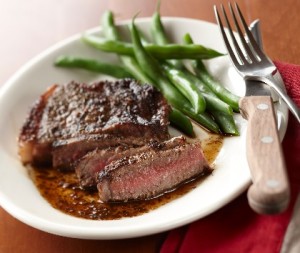Unless you’ve been living under a rock, you’ve heard about the Paleo Diet. It’s everywhere and the most searched diet on Google.

Today I would like to break it down because, in my view, it’s not a diet. It’s a way of life, like being a vegetarian. And it’s not something that you have to do every day. In fact if you want to be “Paleo” it’s recommended that you have a cheat day (which I’ll explain later).
It’s also something that you can slowly integrate into your life as a healthy, anti-aging choice.
The term Paleo comes from Paleolithic, which was the prehistoric era 2.6 million years ago. And this is where the Paleo diet comes from. Our ancestors, the cave dwellers, were lean, strong and healthy. They ate only what they could hunt and gather.
They didn’t have grains or refined sugar. They didn’t eat dairy either.
It’s the most natural diet (way of life) because it’s in our genes. It’s how we were designed – from how we chew, digest, and absorb nutrients.
You see, when we started producing our own food instead of foraging, it began to lack nutrients. Using wheat, sugar and corn was easier then hunting. Later it became a cheaper way to feed a family.
Thousands of studies have proven that agriculture contributed to the emergence and spread of nutritional diseases1,2 . And, with the evolution of agriculture and the need for more production, it has gotten worse. It’s not just with crops, it’s also with livestock. The addition of hormones, pesticides, antibiotics and preservatives are making us sick too.
The newest research is that many people are gluten-intolerant or have gluten sensitivity. Gluten is a protein found in wheat, barley and rye. And it’s in many of the processed foods we eat.
It is estimated that 18 million Americans have gluten sensitivity4.
Gluten sensitivity can damage your small intestines and has many health consequences such as inflammation, reproductive problems, acid reflux, joint pain, bone loss, arthritis, dermatitis, fatigue, anxiety, depression and even anemia.
All the more reason to go Paleo.
But not only is Paleo healthy, it will also have you shedding fat and will help keep you lean.
Now what can you eat on the Paleo lifestyle?
But, I told you about the cheat day. When changing your diet so drastically it can be hard to stick to it. That’s why it’s okay to indulge one day a week. It’ll keep you going and motivated.
Your body will eventually not appreciate this day. But, for now, pick one day a week and have a slice of pizza, a piece of cake, or some French fries, in moderation.
You can also substitute many of your recipes that call for white flour with almond flour. It’s a great Paleo alternative and you can come up with some great dishes that using almond flour will satisfy your craving for carbs.
What’s really important to realize though is that the modernization of our food supply does make it difficult to eat Paleo.
It’s not enough to just eat meat, fish, nuts, seeds, fruits and vegetables. You have to make sure you are getting them from a source that is hormone free, antibiotic free, cage free, grassfed and organic.
Nowadays, most grocery stores do carry “clean” foods and maybe you have a WholeFoods in your neighborhood. But if you don’t, there are many places online to order from. One place I really like is US Wellness Meats they carry all your “clean” meat, fish, butter and produce.
One last benefit to eating Paleo is that you will be cutting out refined sugar. Sugar breaks down your collagen. When this happens wrinkles form.
So, whether you want to go completely Paleo or you want to try it most of the time your body and skin will thank you.
To a youthful more healthy you!
Sandy DeRose
P.S. I love hearing from you so please send me an email with any questions or topics you’d like to read about.
References
1 Executive Summary of the Synthesis Report of the International Assessment of Agricultural Science and Technology for Development” (IAASTD) which was adopted at the Johannesburg plenary session of 7-12 April 2008.
2 Science2.0. Modern Agriculture Has Been Bad For Our Health For 10,000 Years. June 15th 2011
3 National Foundation for Celiac Awareness. Celiac Disease and Fast Facts. 2014
4 National Foundation for Celiac Awareness. Non-Celiac Gluten Sensitivity. 2014